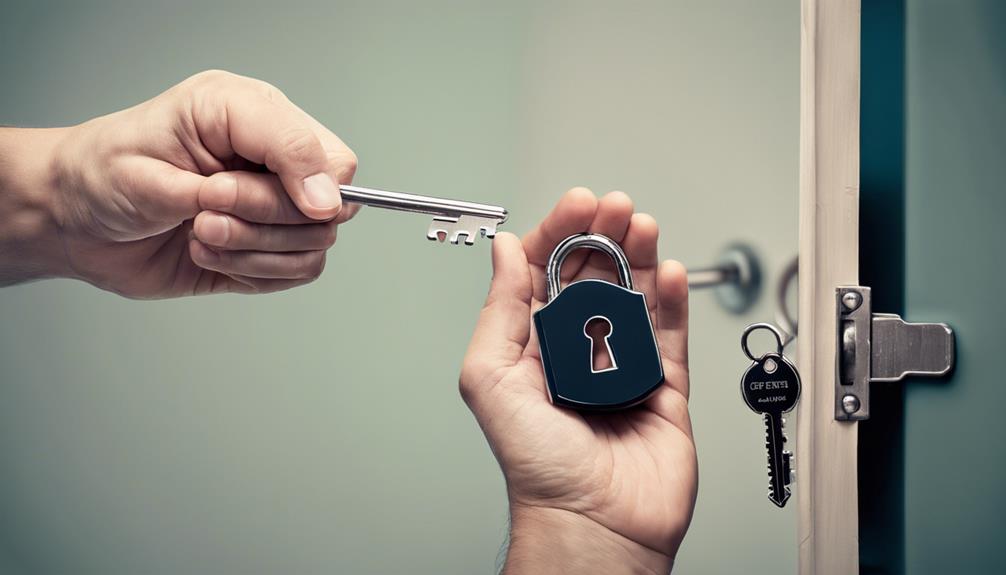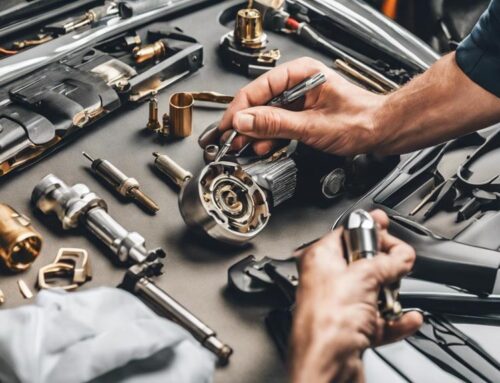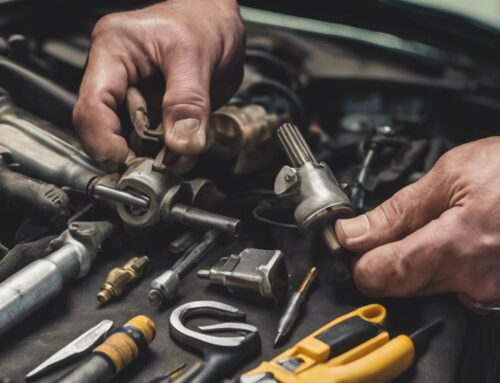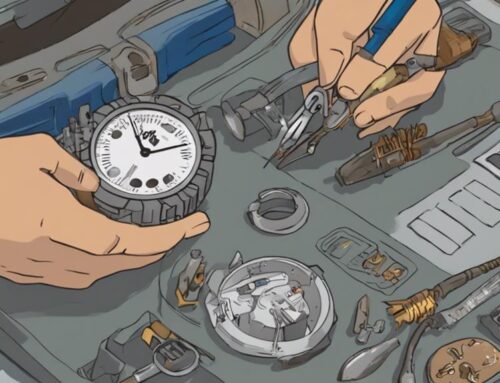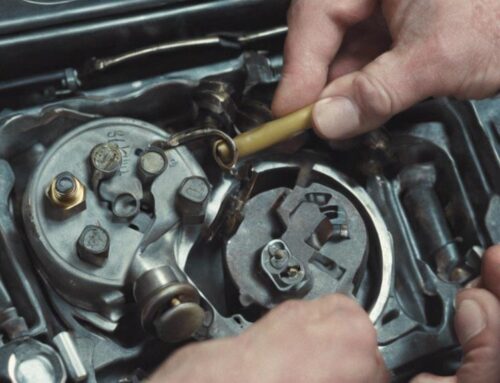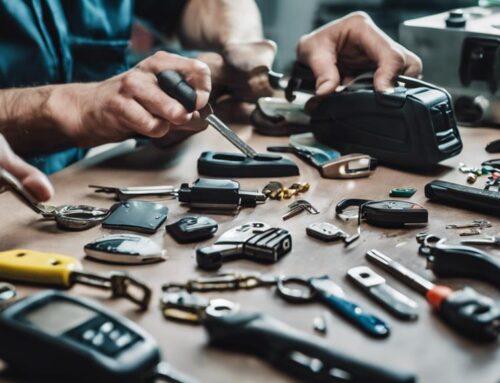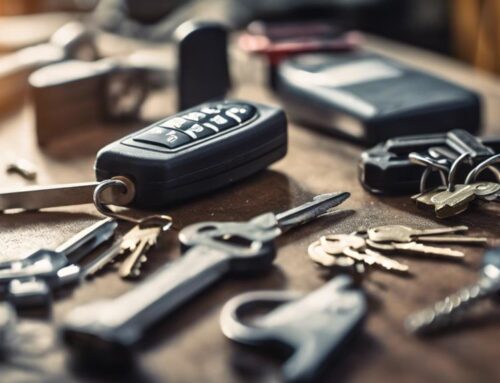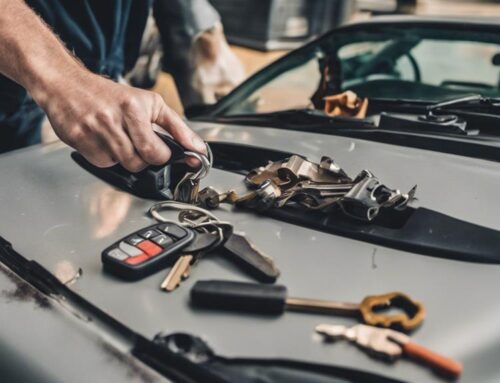If your duplicated key doesn't work, begin by inspecting it for damage such as bends or rough edges. Compare it to the original for matching cuts and ascertain it aligns correctly in the lock. Clean both the key and lock, using a soft cloth and appropriate lubricant. Test the key on different locks to determine if the issue is with the key or lock. Look for lock malfunctions, check for debris or wear, and consider rekeying if needed. If problems persist, contacting a professional locksmith or utilizing services like Low Rate Locksmith can offer solutions tailored to your needs.
Key Takeaways
- Verify the key was accurately duplicated to match the original cuts.
- Test the duplicated key on multiple locks to identify the issue.
- Clean the key and lock to remove any debris affecting functionality.
- Consider seeking professional help from a locksmith for further assessment.
- Evaluate if the original key or lock may be the source of the problem.
Check for Key Damage
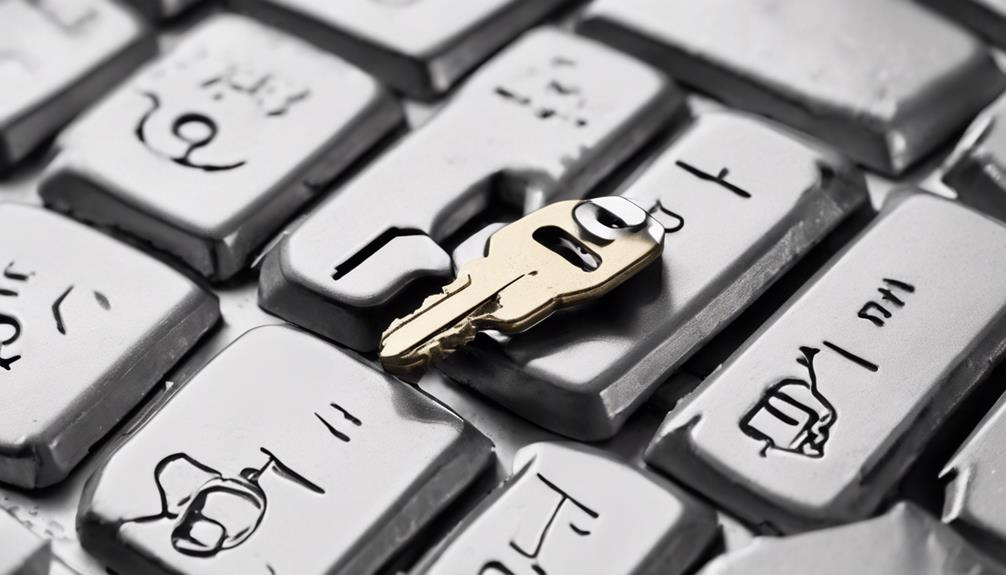
Checking for key damage is the first step to take when your duplicated key doesn't work as expected. Keys are often made from materials like brass, nickel silver, or steel. If your key is damaged, it might not align properly with the lock pins, causing it to be ineffective. Inspect the key for any bends, cracks, or rough edges that could be hindering its function. When keys are duplicated, methods such as milling or laser cutting are commonly used. If the duplicate was made using a poor quality method, it could result in an imperfect copy that doesn't operate smoothly. By examining the key material and the duplicate methods, you can pinpoint potential issues and take the necessary steps to rectify them.
To learn more about the risks of duplicating keys, check out this blog post.
Verify Correct Key Copying
To guarantee your duplicated key works correctly, start by checking the accuracy of the copied key against the original to confirm all cuts match. Inspect the quality of the copied key for any imperfections or deviations that may affect its functionality. Finally, test the key by attempting to lock and release the corresponding lock to verify its proper operation.
Check Key Accuracy
Before assuming there is a problem with your duplicated key, it is essential to ascertain that the key was accurately copied. Double-check the key material and ascertain key compatibility. Mistakes can happen during the copying process, so humorously consider if your key was possibly duplicated onto a banana peel instead of a sturdy metal key. Make sure the grooves and teeth of the copied key match the original. If not, your key may not work. Sometimes, small imperfections can lead to big issues, like trying to fit a square peg into a round hole. So, take a closer look at your duplicated key to confirm its accuracy before diving into more complex troubleshooting. Additionally, remember the Essential Tips for Key Duplication to ascertain a successful outcome.
Inspect Key Quality
Once key accuracy has been confirmed, the next vital step is to inspect the quality of the duplicated key to verify it has been copied correctly. Locksmiths have the expertise to ascertain the key material matches the original key and that the design is replicated accurately, including grooves and notches significant for proper functionality. Check for any burrs, rough edges, or inconsistencies in the duplicated key that could prevent it from fitting smoothly into the lock. A well-copied key should slide in and out effortlessly. Remember, a key is not just a tool; it's a work of art, meticulously designed to release the wonders of your world – so treat it with the respect it deserves!
Test Key Functionality
After confirming the accuracy and quality of the duplicated key, the next step is to test its functionality to verify it has been copied correctly. Testing the key is like giving it a little performance review. First off, check if the key features align perfectly with the original. Slide it in and out of the lock smoothly, no jiggling or sticking allowed! If it feels snug and secure, that's a good sign. Remember, the key materials matter too; they should match the original for peak performance. So, put that key to the test, and if it behaves, you've got yourself a winner!
Clean the Key and Lock
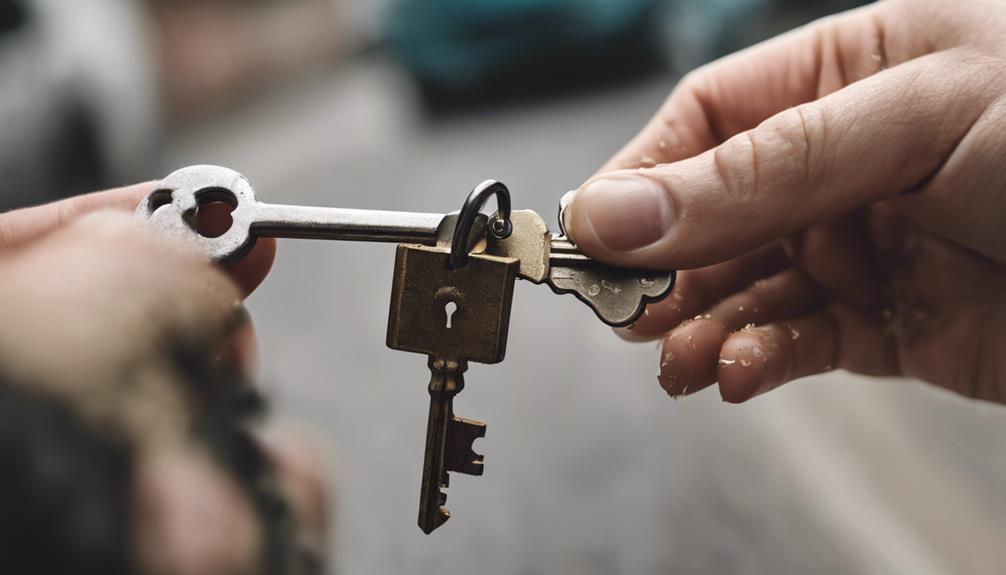
To address the issue of a duplicated key not working, one of the initial steps you can take is to confirm that both the key and the lock are clean. Proper key maintenance and lock cleaning are vital for peak performance. Below is a table outlining steps you can follow to clean the key and lock:
| Key Cleaning | Lock Cleaning | Frequency | Tools Needed |
|---|---|---|---|
| Use a soft cloth to wipe the key and remove any dirt or debris. | Clean the lock with a small brush to dislodge any buildup. | Once a month | Soft cloth, lubricant spray |
| Avoid using harsh chemicals that could damage the key's surface. | Apply a small amount of lubricant spray to the lock for smooth operation. | As needed | Small brush, lubricant spray |
| Check for any bends or damage on the key that may affect its functionality. | Make sure the lock is dry after cleaning to prevent rusting. | – | – |
Test on Different Locks
Consider testing the duplicated key on different locks to determine if the issue lies with the key itself or the specific lock it was intended for. Lock maintenance is essential for the smooth operation of keys. Sometimes locks can be finicky, like that one friend who only eats gluten-free, organic, non-GMO snacks. By trying the key on various locks, you can assess if the problem is more widespread. This method can also help identify if the duplicated key is durable enough to withstand regular use. Just like a good pair of jeans, keys need to be sturdy to handle the daily grind. So, grab a few locks, see if the key fits, and suss out if it's the key or the lock that needs some TLC.
Look for Lock Malfunctions
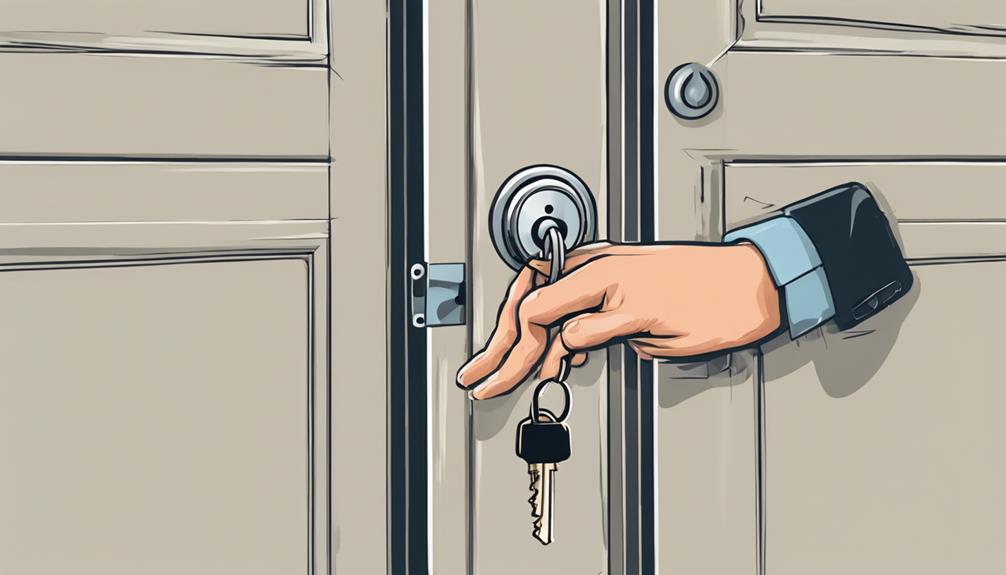
When encountering issues with a duplicated key not working, it's important to take into account potential lock malfunctions. Start by checking for any debris that could be obstructing the key's entry. Inspect the quality of the key itself, looking for any signs of wear or damage that could affect its functionality. Finally, test the key with a spare to rule out any issues with the duplicated key specifically.
Check for Debris
Examine the keyhole of the lock closely for any signs of dirt, debris, or foreign objects that may be obstructing the key from turning smoothly. Key maintenance is vital for ideal lock security. If you notice any gunk or buildup, grab a trusty can of compressed air or a cotton swab to clean out the keyway. Be gentle, though; we don't want any accidental lock damage from aggressive cleaning! Once you've cleared out the debris, give your duplicated key another shot. Sometimes, a little spring cleaning is all your lock needs to get back on track. Remember, a clean keyhole is a happy keyhole, and a happy keyhole means a happy you – with a working key!
Inspect Key Quality
To assess the quality of your duplicated key and identify potential lock malfunctions, closely observe the key's edges, teeth, and overall condition. Check for any signs of wear or damage on the key materials, such as bends or chipped areas that may be affecting its ability to operate the lock correctly. Make sure the key design matches the original key, as even small variations can cause issues with the lock mechanism. Look for any irregularities in the key's shape or size that could be preventing it from fitting smoothly into the lock. By paying attention to these key details, you can determine if the issue lies with the key itself or if there may be underlying lock malfunctions causing the problem. Additionally, it's important to contemplate whether rekeying the lock could be a potential solution, as discussed in Is Rekeying the Right Fix for Your Malfunctioning Lock.
Test With Spare
For evaluating the functionality of your duplicated key and pinpointing potential lock malfunctions, testing it with a spare key is a practical step. When it comes to key duplication, spare keys can be lifesavers. Here are some key points to take into account when testing with a spare:
- Check for Physical Differences: Inspect both keys for any variations in size or shape. Regular maintenance and inspections extend lock lifespan and prevent significant problems.
- Test in Different Locks: Try both keys in various locks to determine if the issue lies with the key or the lock.
- Analyze Keyway Alignment: Verify the keyway aligns correctly with the lock cylinder.
- Examine Key Material: Compare the materials of both keys for any discrepancies that may affect performance.
- Consult a Locksmith: If issues persist, seek professional help to diagnose and rectify any underlying problems. Importance of addressing stuck keys by professionals to avoid further damage
Try Lubricating the Lock
If your duplicated key doesn't work, one potential solution to explore is lubricating the lock. Proper lock maintenance is essential for smooth operation. Sometimes, a dry or dirty lock can cause the key not to work correctly. To address this, you can use a graphite-based lubricant or a silicone spray specifically designed for locks. Insert the key and turn it a few times to help distribute the lubricant inside the lock mechanism. Avoid using oil-based lubricants as they can attract dirt and gum up the lock over time. Regular maintenance like this can prevent the need for key replacement and guarantee your locks function properly. Remember, a well-lubricated lock is a happy lock!
For more tips on keeping your locks rust-free and functional, check out our Essential Tips to Keep Your Locks Rust-Free and Functional article.
Contact Professional Locksmith
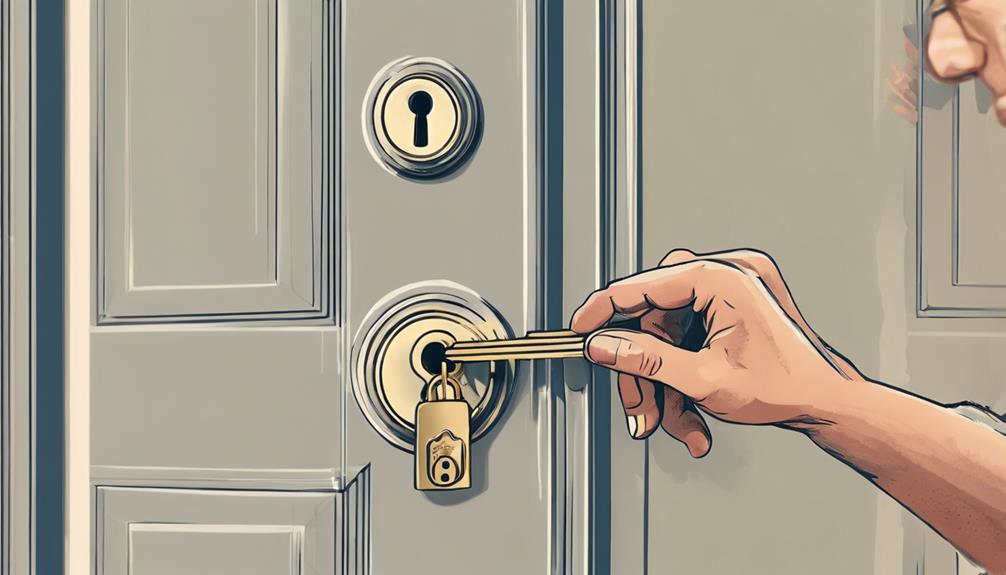
If attempting to lubricate the lock did not resolve the issue with your duplicated key, it may be time to seek assistance from a professional locksmith. Locksmiths are the key wizards of the modern age, equipped with the skills to tackle even the trickiest of locks. Here are some reasons why contacting a professional locksmith is your best bet:
- Expertise: Locksmiths are trained to handle all types of locks.
- Key Replacement: They can provide key replacement services if needed.
- Specialized Tools: Locksmiths have specialized tools to fix lock issues efficiently.
- Security: They guarantee your security by providing reliable locksmith services.
- Emergency Assistance: Locksmiths offer emergency services, so you can get help when you need it most.
Utilize Low Rate Locksmith's Services
Consider utilizing the services of Low Rate Locksmith for reliable and efficient assistance with your key-related issues. Low Rate Locksmith offers locksmith expertise at affordable rates, ensuring you get superior service without breaking the bank. Their team of professionals can help you with key duplication, lock repairs, and even emergency lockout situations. If you find yourself in a situation where your duplicated key doesn't work, don't fret – Low Rate Locksmith's skilled technicians can quickly resolve the issue. With their quick response times and skilled technicians, you can trust Low Rate Locksmith to handle all your locksmith needs with precision and care. Don't let a faulty duplicated key stress you out when essential locksmith solutions are just a phone call away. Reach out to them for a solution that's both effective and easy on your wallet.
Conclusion
To sum up, when your duplicated key fails to work, it's crucial to investigate the possible reasons behind the issue. By checking for key damage, verifying correct copying, cleaning the key and lock, testing on different locks, looking for lock malfunctions, trying lubrication, and seeking help from a professional locksmith if needed, you can effectively resolve the problem. So, when faced with a non-functioning duplicated key, are you ready to take the necessary steps to regain access smoothly?

